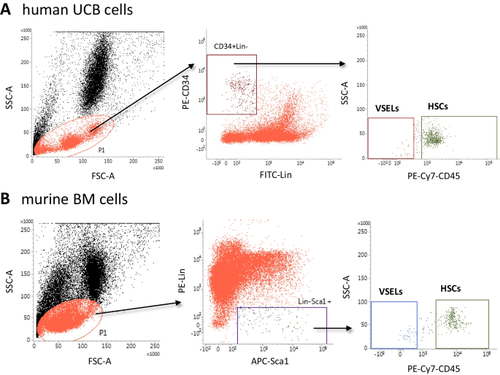Stem Cell Reviews and Reports ( IF 4.8 ) Pub Date : 2024-04-18 , DOI: 10.1007/s12015-024-10716-4 Kamila Bujko , Katarzyna Brzezniakiewicz-Janus , Justyna Jarczak , Magdalena Kucia , Mariusz Z. Ratajczak

|
Purinergic signaling is an ancient primordial signaling system regulating tissue development and specification of various types of stem cells. Thus, functional purinergic receptors are present in several types of cells in the body, including multiple populations of stem cells. However, one stem cell type that has not been evaluated for expression of purinergic receptors is very small embryonic stem cells (VSELs) isolated from postnatal tissues. Herein, we report that human umbilical cord blood (UCB) and murine bone marrow (BM) purified VSELs express mRNA for P1 and P2 purinergic receptors and CD39 and CD73 ectonucleotidases converting extracellular ATP (eATP) into its signaling metabolite extracellular adenosine (eAdo), that antagonizes eATP effects. More importantly, we demonstrate that human and murine VSELs respond by chemotaxis to eATP, and eAdo inhibits this migration. These responses to eATP are mediated by activation of Nlrp3 inflammasome, and exposure of VSELs to its specific inhibitor MCC950 abolished the chemotactic response to ATP. We conclude that purinergic signaling plays an essential, underappreciated role in the biology of these cells and their potential role in response to tissue/organ injuries.
Graphical Abstract
中文翻译:

小鼠和人类纯化的极小胚胎样干细胞 (VSEL) 表达嘌呤能受体并迁移至细胞外 ATP 梯度
嘌呤能信号是一种古老的原始信号系统,调节组织发育和各种类型干细胞的规格。因此,功能性嘌呤能受体存在于体内多种类型的细胞中,包括多种干细胞群。然而,一种尚未评估嘌呤能受体表达的干细胞类型是从出生后组织中分离的非常小的胚胎干细胞(VSEL)。在此,我们报告人脐带血 (UCB) 和鼠骨髓 (BM) 纯化的 VSEL 表达 P1 和 P2 嘌呤能受体的 mRNA,以及 CD39 和 CD73 核酸酶将细胞外 ATP (eATP) 转化为其信号代谢物细胞外腺苷 (eAdo),拮抗 eATP 效应。更重要的是,我们证明人类和小鼠 VSEL 通过趋化性对 eATP 做出反应,而 eAdo 抑制这种迁移。这些对 eATP 的反应是通过 Nlrp3 炎性体的激活介导的,将 VSEL 暴露于其特异性抑制剂 MCC950 会消除对 ATP 的趋化反应。我们得出的结论是,嘌呤能信号在这些细胞的生物学及其在响应组织/器官损伤中的潜在作用中发挥着重要的、未被充分认识的作用。



























 京公网安备 11010802027423号
京公网安备 11010802027423号